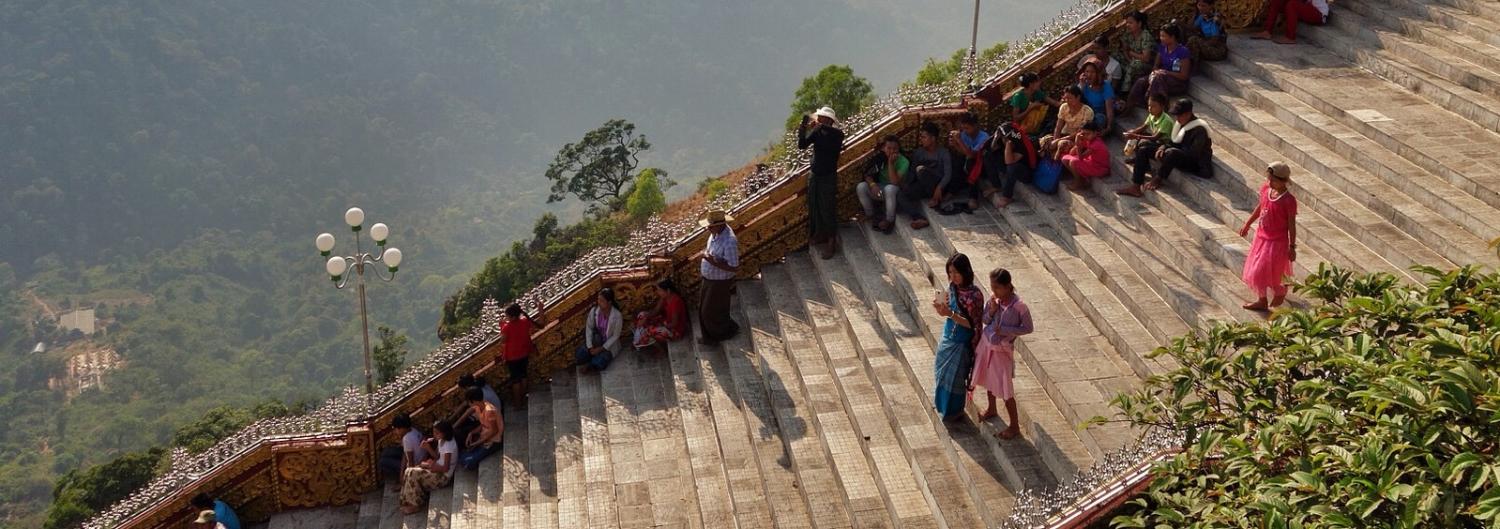Last weekend some 20,000 people took part in a protest over the naming of a bridge crossing the Thanlwin River connecting Mawlamyine and Chaungzon in Mon State, Myanmar. The march was by far the largest protest to take place since the Aung San Suu Kyi's National League for Democracy (NLD) took power in April last year. It was also completely avoidable.
Fighting in the North of Myanmar and the ongoing Rohingya crisis have put the NLD in a tight spot. Myanmar’s military has been fighting a coalition of the Kachin Independence Army (KIA), Arakan Army (AA), Myanmar National Democratic Alliance Army (MNDAA), and Ta’ang National Liberation Army (TNLA) since November. Scorched-earth reprisals against the Rohingya for a small insurgent attack in October have prompted severe international criticism, including accusations Aung San Suu Kyi failed to uphold the human rights of the Muslim minority. So with all this trouble in Myanmar's north and west, why is the NLD shooting itself in the foot in the eastern Mon State?
The issue began when a plan to name the bridge after independence hero (and Aung San Su Kyi’s father) General Aung San was proposed by the Pyithu Hluttaw (parliament’s lower house) representative and NLD member Mi Kon Chan (Paung Township, Mon State) on 28 February. The change of plan - the bridge was supposed to have had a local name - upset many in Mon State.
Frankly, the government should have seen the weekend’s big protest coming. Several complaints surfaced in Mawlamyine over the past month. About 3000 people protested in early March, a sign of things to come. On 14 March the lower house of parliament approved the motion to name the bridge 'Aung San Bridge', with 217 votes in favour, 43 against and 116 abstentions.
The NLD has been tightly run, both before and since last year's election. Candidates, and now parliamentarians, are on a very short leash. Interviews or individual opinions are rare. Whipping the vote has not been a problem for such a top-down organisation. Killing the motion early should have been possible: as an opposition party member U Maung Myint pointed out, naming a bridge is a function of the administrative government, not the legislative branch. This was a fight that didn’t need to be picked.
The day after the vote, Union Minister for Ethnic Affairs U Nai Thet Lwin said it was unfortunate that the bridge naming issue was decided by the Hluttaw, calling it a state matter that should have been settled by local government and constituents. He also criticised Mi Kon Chan, who happens to be his daughter, for introducing the bill. (One doesn’t want to speculate on family matters, but one wonders if the idea of the bill could have been killed over a dinner table.)
The organising committee behind last weekend's expected only 10,000 to show up. It must have been pleased to have drawn double that number, with the crowd clearly undeterred by the heat as the temperature climbed to the high 30s. The committee's 96 members represent every township in Mon State as well as ethnic Mon communities elsewhere in the country. Thus far they have followed the Right to Peaceful Assembly and Peaceful Procession Law by obtaining permission to protest in advance. By making the bridge a pan-Mon issue, the Committee has turned the anger against the name into a test of the NLD’s ability to respect and respond to the wishes of an entire ethnic minority group.
It is also, therefore, a test of the willingness of the Bamar majority to compromise with ethnic groups in the new, more democratic political climate. After all, this dispute does not drag in the complexities of resource allocation or national security, issues that have and will continue to bedevil the NLD’s attempts to broker a peace between the military and certain ethnic armed groups. It was simply an opportunity for the government to listen to local voices and demonstrate that they are valued. It isn’t impossible for the government to salvage the situation. It could, rather embarrassingly, organise a second parliamentary vote on the name of what is, after all, a regional bridge. Other options include quietly letting the bridge go nameless or be informally named.
If the central government chooses not to adopt any such compromise, it is likely that in the short term protests will continue and perhaps even escalate and spread to other locations. There may be more serious disruptions if there is an attempt to put up an 'Aung San Bridge' sign, or make the name permanent in some other way.
In the longer term, if the Mon community fails to win some kind of concession then it is likely this episode will generate significant disillusionment with the NLD and democracy, both of which will come to be seen even more as tools of Bamar hegemony.
In politics, the metaphor of a bridge is often deployed to illustrate when one group cooperates, includes, or accommodates another. In Myanmar, an actual bridge may end up serving as an illustration of how the central government refuses to engage the concerns of ethnic minorities and wastes opportunities to do so.
